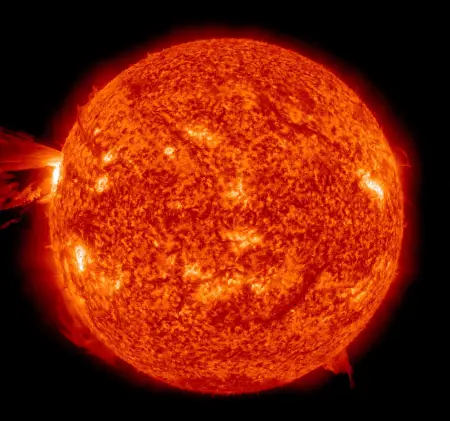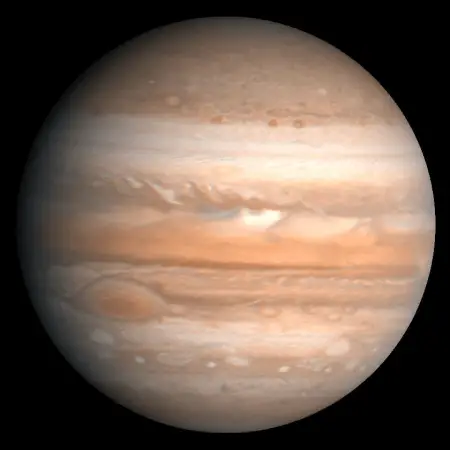On a clear night, we can see thousands of stars that dot the dome of the sky. Along with these stars, a few of the lights are actually planets. They are extremely distant from us and sometimes, they are hard to tell apart. So how are stars different from planets? Their differences will be discussed as you read on.
Summary Table
| Star | Planet |
| Very big in size | Small compared to a star |
| Have their own light | Have no light but only reflect light from the stars |
| Are fixed at a point | Constantly move across the sky |
| Twinkle in the sky | Do not twinkle and appears still |
Definitions

A star is actually an extremely bright and hot sphere of gaseous mixture bound by its own gravity. The bright light is produced by thermonuclear fusion, which is basically the merging of the nuclei of two lighter atoms to form a heavier element.
Usually, the lighter atoms are hydrogen, and the product of the fusion is helium. The fusion reaction needs very high energy to begin. This process produces light and huge amounts of energy, sustaining the chain reaction.
We often observe that stars twinkle in the sky. Scientifically, this phenomenon is called “stellar scintillation.” This occurs because the turbulent upper atmosphere causes light from the stars to refract continuously as it passes through.
Due to the huge distance from us, we see stars only as tiny dots, and they are greatly affected by these refractions. Even the brightest evening star, Sirius, appear to constantly change brightness and color.

A planet is a celestial body that orbits the sun, or more generally, a star. It has enough mass that makes it spherical by the sheer force of its own gravity, but not massive enough to start thermonuclear fusion. The word “planet” is derived from the Greek asteres planetai, or simply planetai, which means “wanderers.” The term was derived from the observation that planets did not maintain a constant position in the sky relative to the other stars. We don’t see planets twinkle since planets appear as disks instead of points.
Planets are much closer compared to stars.
The turbulence may cause only a slight partial distortion on the disk which may not be perceived with the naked eye.
Star vs Planet
What is the difference between a star and a planet?
Stars are actually very big, compared to planets which are much smaller. Stars produce their own light by thermonuclear fusion. Planets merely reflect light from the sun on its surface. A star stays in a constant position in the sky relative to other stars.
A planet constantly moves across the sky which can be observed by recording its daily position and comparing it to previous observations. Stars twinkle in the sky. Planets, on the other hand, often appear still and do not twinkle.





